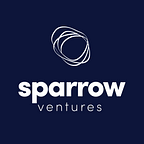Failure is part of the process
The approach
At Sparrow Ventures, we follow a very detailed venture building process, where we validate numerous business models in the Seed Stage with the objective to bring several ventures into the Growth Stage each year. If they meet the criteria to progress to the Growth Stage, they receive funding and have the chance to become a fast-growing and successful startup within our portfolio.
During this venture building process, we follow a lean and data-driven approach, where we validate the most important angles of the specific business models. Along this process, we collect data to increase the confidence levels around the critical hypotheses, which ultimately helps us to decide if the ventures should progress to the Growth Stage or not.
While this venture building process leads to a few venture carve-outs every year, the majority of the ventures we validate is likely to end up in our ‘venture graveyard’. This is to be expected in a venture building or venture capital strategy and is a calculated result of our venture building process.
Example: Telemedicine subscription model for pets in Switzerland
To illustrate our venture building process, let’s take a recent venture Petcare as an example. With Petcare we built the first veterinary telemedicine solution in Switzerland, where pet owners can book video consultations with experienced veterinarians in a subscription model.
Early Topic Validation
Based on initial signals from the pet market and similar business models in other countries, we analyzed this business model during a 1-week Topic Validation sprint. Here we analyzed essential elements, such as the market potential, business model economics, customer acquisition channels, and most importantly, we were trying to understand the problems of the pet owners during the patient journey of their pets.
Following this Topic Validation, we found that the Swiss veterinary market shows a large market potential and we also identified high costs and limited accessibility of veterinarians as a potential problem for pet owners. Consequently, this venture met the criteria to be validated further and we decided to move it into the Minimum Viable Product Stage (the so-called MVP Stage).
Moving on to Minimum Viable Product (MVP)
For the MVP Stage, we released further resources and brought together an internal interdisciplinary venture team, which usually consists of Venture Architects, Product Owners, Growth Marketers, UX/UI Designer and Developers if required. This team of experts then worked in weekly sprints to first develop and then validate the MVP in the real market against a set of hypotheses.
Build. Measure. Learn.
During the MVP Stage, we were trying to answer the most critical questions related to the venture and business model. Will the pet-owners adopt telemedicine to replace regular vet visits? Is the subscription model with unlimited online consultations a valid solution for the pet owner's problems related to veterinary visits and is the market potential really big enough? After testing the venture in the market with real customers for a few months, we collected sufficient data to answer all major hypotheses with a high level of confidence to make a decision about the future of Petcare.
The decision: Even if it is hard, you sometimes have to let go.
Unfortunately, we realized that the problems which pet owners encounter during regular veterinary visits weren’t big enough and our telemedicine subscription solution was mostly used for one-time consultations, such as emergencies or during out-of-office hours. For health issues during office hours, the pet owners appear to just call their personal veterinarian and check, if they need to bring in their pet for diagnosis or treatment. Consequently, the market for a telemedicine service for pets limited to emergency calls doesn’t represent a big enough market potential for a stand-alone business model.
Facing a limited market potential and based on all other insights, we ultimately decided to not pursue the Petcare business model further and sold the platform to an external best owner outside the group — a local practice chain that can now offer complementary telemedicine services to their regular offerings.
In the end: We follow the process. The next big thing might be just around the corner.
Despite not being successful in carving out this venture, the customer-centric and data-driven validation of this business model was an overall success and since failure is the nature of the beast in this early stage, we consider failure as an integral part of our venture building process. Taking the lessons from our ventures who didn’t make the cut, provides valuable learnings which can be transferred to other ventures, while at the same time improves our gained knowledge which we are able to share within the larger organization.
In this way: on to the next one, which might make it to the carve-out, becoming a fast-growing startup addition to our portfolio.
This blog post was written by Gian, who works as Venture Architect at Sparrow Ventures.
